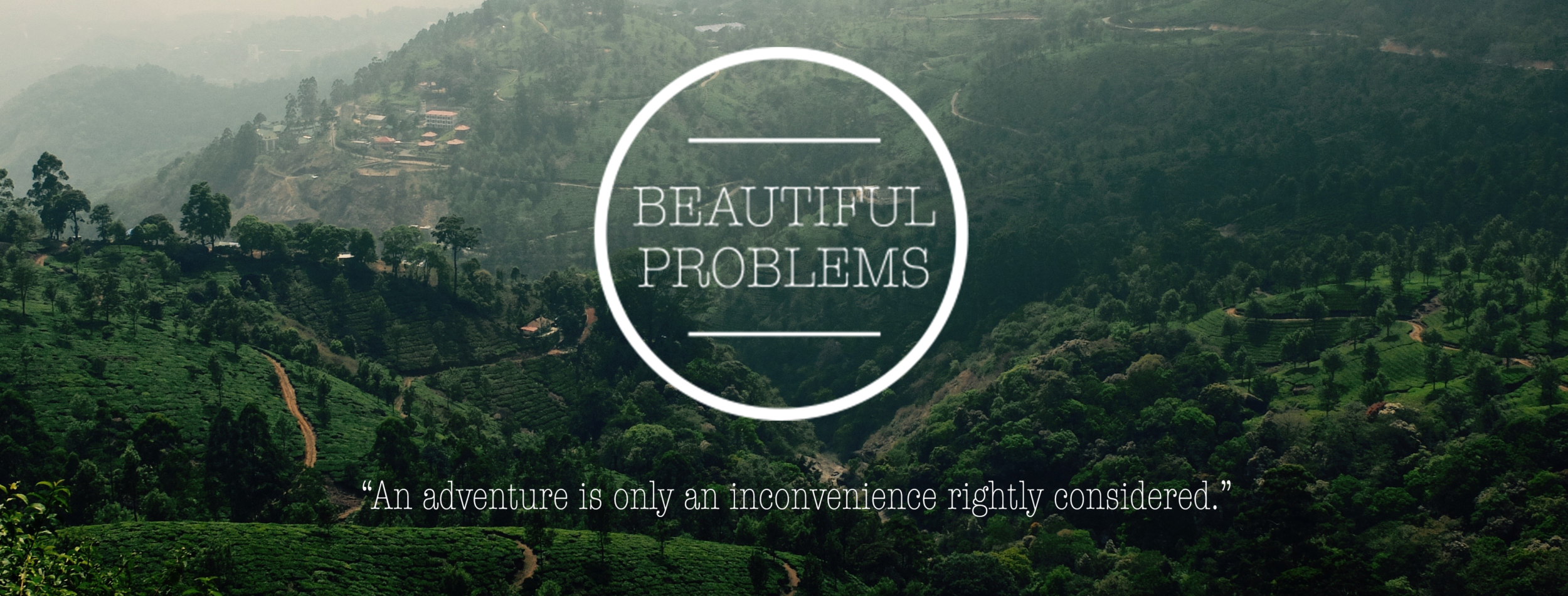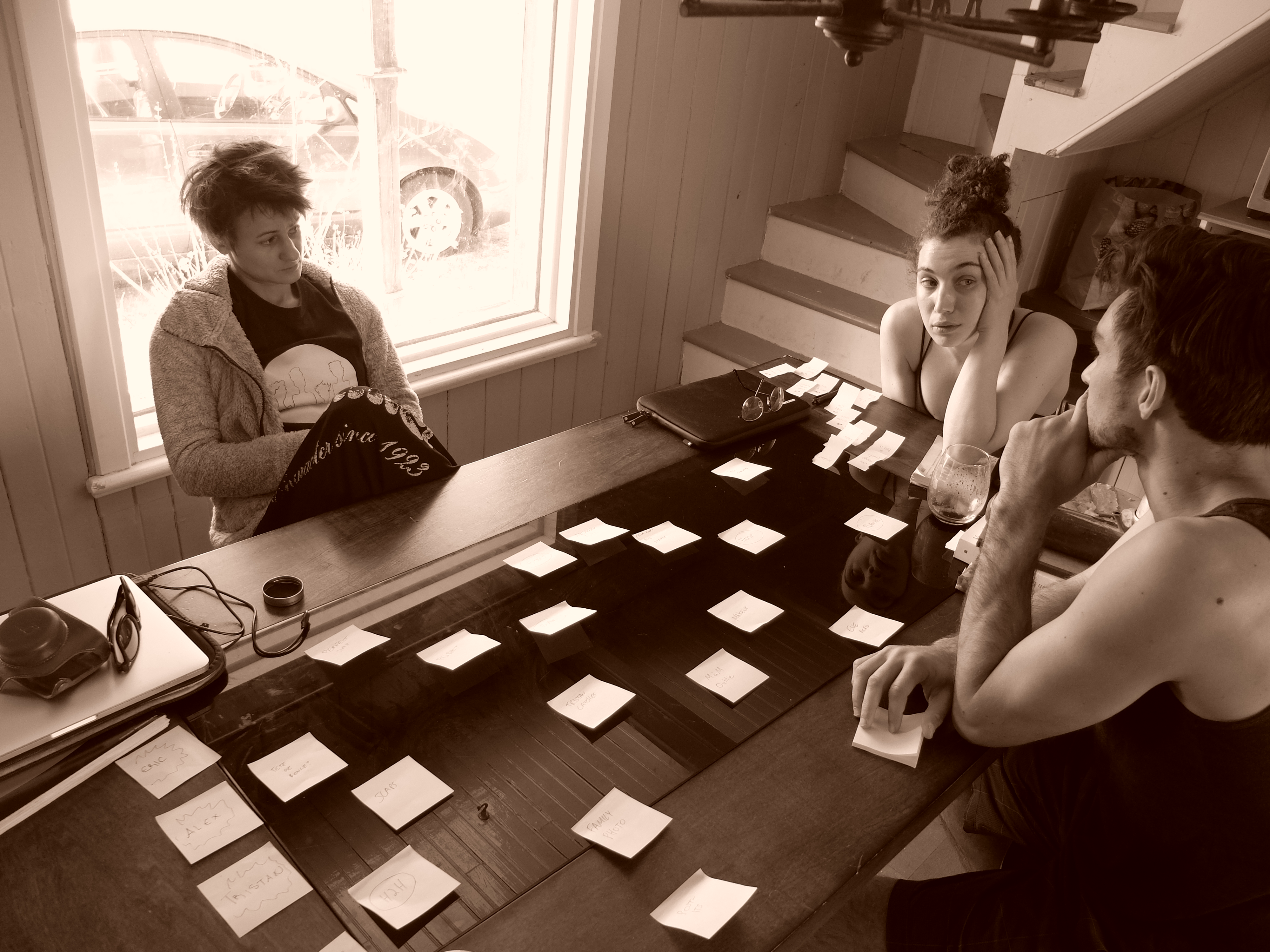I recently finished The E-Myth Revisited, which proposed thinking of your small business as if you wanted to franchise it. Basically, what systems can you put in place to ensure consistently great experiences for your customers? What can be automated/ done by someone else so you can focus on the part of the job you enjoy most/ are best at? My first thought was that creativity, art and circus can’t (or shouldn’t), be automated or systematized. Upon further reflection I realized that during our own creation for Sweat & Ink with Barcode Circus Company I had already begun reflecting on our creative process- what elements make up a consistently enjoyable and productive creative process that might reliably make interesting new material?
While I can’t say I’ve found the secret formula to creativity or working well in a team, some ideas (I hesitate to call them “rules”) came to mind that worked well for our group that I suggest you try in your next cooperative creative endeavor. Below are a handful of tips that I believe contribute to a fun and productive physical creation.
Note: These tips are largely for the first, “exploring” phase of creation, which for us usually means improvising; rather than later steps that might include choreographing, structuring, polishing, etc.
1. Say what you need, even if you’re unsure
(This also comes in part from the book Non-Violent Communication)
When the leader of an improv/ research session is clear about what they’re asking of the others, even if they themselves are unsure what that is, it helps put the others in a mindset where they feel they will be able to successfully help the leader.
Example: “I’m not sure exactly what I’m looking for, but could we all try to walk around the room together with our heads touching?”
Specifying that you’re not sure of what you’re looking for gives permission to those that are improvising to propose things while still feeling that they’re contributing to the clarification of your vision (without risking ‘failing’ your vision). Maybe you think it could be a good idea to have three people play with a bar of soap and you don’t really have any expectations for it, you just want to see what happens. Say that.
Alternatively, if you think it would be great to do a scene with everyone on a chair pretending it’s a life raft that they’re scared to fall out of and Tristan should be singing happy birthday and Eve eating a pineapple and Eric inexplicably juggling machetes and the music Lamb of God, say that. But stay open to it surprising you if it doesn’t turn out like you anticipated. Sometimes the improv is smarter than you are.
Side note: Timing is important for these suggestions. Even a clear, well-intentioned proposition is unlikely to be well received if you bust it out while in the middle of rehearsing a completely different act. Ideas are just seeds- they take nurturing, watering, and tending by the whole team to fully develop. Don’t throw your seeds in your teammates’ faces and expect a vegetable garden to pop up.
2. Do work before the room (music, ideas, planning, etc)
Figuring out what you want to do before you’re in the room helps you feel like you’re not wasting time once there, especially when you’re paying for the time in the room and have a limited amount of it where you can actually work together. Finding music, thinking of ideas you want to try and specifically how you plan on trying them will set you up to succeed (or at least fail efficiently and move onto the next thing!) once everyone’s there.
If you want to do a piece on loneliness, how do you plan on developing it into an actual physical work? Will it be an improv, and if so, alone or with people? What are the rules to the improv? What props/ disciplines will you use? What music will be playing? If you want to let characters and moments develop ‘naturally’, what sort of exercises can you do that will naturally create situations between multiple characters?
Create a bank of music with lots of different styles and emotions so you’re ready when new ideas come up in the room that require unexpected sonic support.
Try answering this question before getting to the room: “What are we actually going to do, what is the first step?” If you’re supportive (see Tip 4), the next step will often take care of itself.
3. Be warm
Get to a point of sweating before trying anything. Personally I’m a lot more awake and open to ideas when I’m warm then when I’m curled up in a ball with my coffee in the corner. Getting sweaty is a physical acceptation that you are there to work [play]: you’ve transitioned off the wall of the dance floor where you’re too cool to look silly and are now in the center, ready to flail and rave and stay up until 4am. That’s where the good stuff happens.
4. Yes is more fun than No (Say Yes)
Yes leads to more fun surprises and happy accidents- saying Yes to a proposition you might instinctively say No to brings you to places you wouldn’t naturally go. That’s part of the beauty of creation- discovering a part of yourself that you can embody that you didn’t previously know about.
In a similar vein, after someone’s just done an improv, identifying the positives (a moment that touched you, an expression that made you think of your grandmother, the physicality or a moment of stillness), can help keep the momentum alive, and is more likely to inspire them to take a second crack at it than saying there was a lot of boring, unclear moments and they don’t point their toes enough. Of course there will be that too, it’s all made up.
Shana Carroll of the 7 Fingers once told us that creation is a constructive act, the antithesis to the hate and destruction in the world. Yes’s are constructive, No’s, destructive.
5. Do more, talk less
Instead of debating which idea is better to try, do them one after the other with full intention of making them work. Usually this solves a debate faster than arguing and is more fun. I also strongly believe that talking about creating (or talking about writing a book, or building a house, or running a marathon) is important, but it doesn’t actually create anything (or finish a book, or build a house, or run the marathon).
Talk enough to get on the same page, then get physical.
In Conclusion
This is (obviously) an inexhaustive list, and even within Barcode we have disagreements about the best way to work, but I’m convinced that when these tips are successfully applied they contribute to fun, productive creation sessions.
What do you agree or disagree with, what works or doesn’t work for your team? What tips have most helped you have consistent success in your creations? I’d love to hear your reactions in the comments section below.

